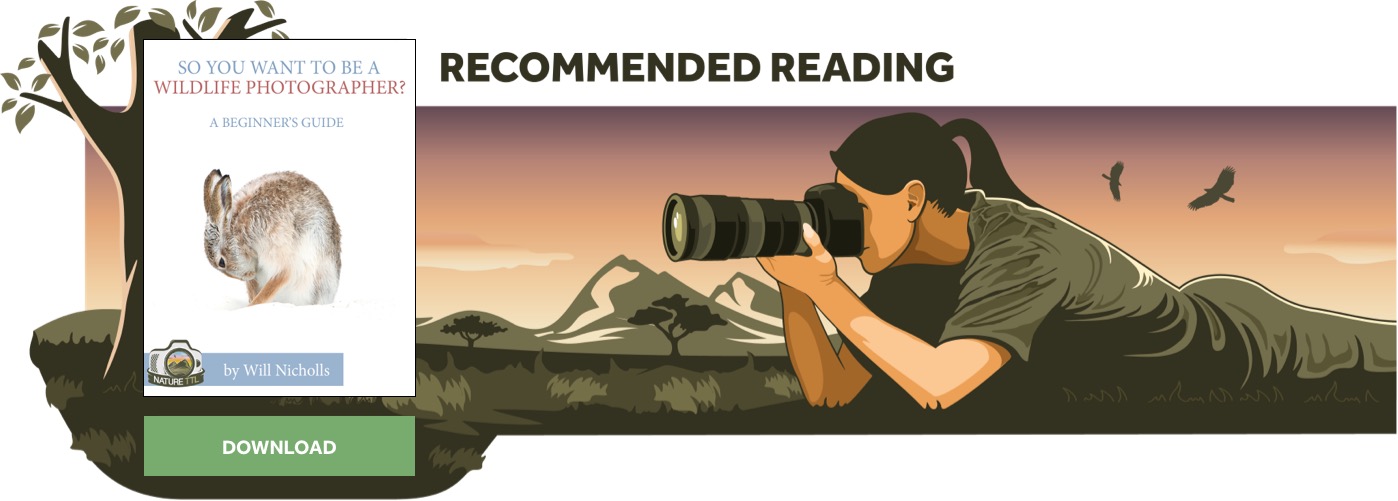Best Places for Photography in the Bavarian Forest

Spanning dense woodlands, dramatic waterfalls, serene treetop walks, and quaint cultural landmarks, the Bavarian Forest provides a diverse canvas for nature photographers.

Its proximity to the Bohemian Forest in the Czech Republic adds another layer of interest, with a blend of landscapes and historical sites.


This photography guide explores some of the most picturesque locations, including the Bavarian Forest National Park, Lusen National Park Centre, the Baumwipfelpfad treetop walk, the Hochfall and Rissloch waterfalls, and Stožec Chapel in the Bohemian Forest.
Read more: 8 Ways to Improve Your Forest Photography
Bavarian Forest National Park
The national park is the most iconic feature of the Bavarian Forest. As Germany’s first national park, it embodies the philosophy of letting nature thrive without human interference.
Covering over 240 square kilometres, it is home to ancient forests, tranquil lakes, and a diverse range of wildlife, including lynx, wolves, and capercaillies.
Photographers can explore a variety of landscapes within the park. The forest trails are perfect for capturing the interplay of light and shadow among the towering trees. During autumn, the park transforms into a vibrant display of colour, making it one of the best times to visit. Winter, on the other hand, offers stark yet stunning compositions of snow-covered trees and frozen lakes.

Birdwatchers will especially find the Bavarian Forest a haven for photography. The dense woodlands and open clearings attract a wide variety of birds, from small species such as finches and woodpeckers to larger birds of prey such as hawks and eagles. Woodpeckers, in particular, are a delight to photograph here, with their striking plumage and rhythmic hammering.
A telephoto lens is essential for wildlife photography in the national park, enabling close-up, detailed shots while maintaining a respectful distance. A focal length of 300mm or more ensures animals remain undisturbed, aligning with the park’s ethical wildlife observation guidelines.
For photographing birds and tracking their swift movements through the forest canopy, a steady hand or tripod, along with a camera with fast autofocus, is highly recommended.
Read more: How to Photograph Birds: The Complete Guide
Hirschgeweih Trail
The Hirschgeweih is a circular trail in the Bavarian Forest, which provides opportunities for nature photographers to encounter birdlife and wildlife in the national park.

Starting at the research station in Taferlruck, the path winds through dense forests before opening up to the Neuhüttenwiese meadow – a clearing with picturesque views. The trail’s name, which translates to “Deer Antler Circuit,” reflects its connection to the park’s wildlife, which predominantly comprises red deer.
Accessible from May to November, the trail is particularly captivating in autumn when vibrant foliage frames the landscape, and the deer rut begins. Visiting during this season enables nature photographers to capture unique action shots and behavioral displays of the animals.
As red deer in the national park are not habituated to humans, photographers are encouraged to bring their own pop-up hides or camouflage to increase their chances of observing and capturing the red deer undisturbed.
Strategic placement of hides near forest clearings, meadows, or wildlife trails allows photographers to remain concealed while minimizing disturbance to the animals. Patience is key. As long waiting times are often necessary, a sturdy tripod, telephoto lens with a wide aperture between f/2.8 and f/4.0, and careful positioning allow for sharp, detailed shots to be achieved.
Capturing red deer during dawn or dusk, when they are most active, requires a higher ISO to maintain a fast shutter speed in low-light conditions. Additionally, bringing a zoom telephoto lens can help keep gear light and flexible while capturing distant subjects.
The three point three km trail also features small streams, where a wide lens and ND filter can be used for long-exposure photography, offering opportunities to capture the serene beauty of the landscape along the way.
Read more: How to Photograph Red Deer
Baumwipfelpfad: The Treetop Walk
One of the most iconic attractions in the Bavarian Forest is the Baumwipfelpfad, a treetop walk that allows photographers to experience the forest from a bird’s-eye view. Stretching over 1,300 metres and rising 25 metres above the forest floor, this unique structure culminates in a spiral tower that reaches a height of 44 metres.
From the top, photographers are rewarded with sweeping panoramic views of the Bavarian Forest, the Bohemian Forest, and even the Alps on a clear day.

For nature photography, the Baumwipfelpfad offers a variety of perspectives. The elevated walkway provides a unique vantage point for capturing the canopy of the forest, especially during golden hour.
Autumn is an especially magical time to visit, as the foliage transforms into a vibrant tapestry of reds, oranges, and yellows. The spiral tower is an architectural marvel in itself and makes for an interesting subject, especially when framed against the forest backdrop.
Macro photographers will also enjoy details such as lichens and mosses along the walk, in addition to the occasional bird perched on the treetops.
The Rissloch and Hochfall Waterfalls
The Rissloch and Hochfall waterfalls are among the most dramatic and photogenic locations in the Bavarian Forest. Nestled within the pristine wilderness near Bodenmais, these cascades are perfect for nature photographers looking to capture dynamic compositions.
The Rissloch waterfall is the largest waterfall system in the Bavarian Forest, surrounded by a lush forest of beech, spruce, and fir trees. The most dramatic shots of the waterfall can be achieved by visiting in spring or after heavy rains, when the water flow is at its peak.

Early mornings or overcast days are also ideal for photography, as the softer light minimises harsh reflections on the water. Using a long exposure can create a whimsical effect that enhances the waterfall’s ethereal charm.
Nearby, Hochfall offers a smaller yet equally captivating scene. Surrounded by moss-covered rocks and dense vegetation, it provides a more intimate setting compared to the grandeur of the Rissloch waterfalls. Its secluded location makes it ideal for photography with minimal disturbances. For both waterfalls, sturdy footwear is essential, as the trails can become slippery, especially after rain.
Read more: How to Photograph Waterfalls
Stožec Chapel in the Bohemian Forest
Nestled in a forest clearing in the neighbouring Bohemian Forest of the Czech Republic, Stožec Chapel is an 18th-century wooden structure originally built as a pilgrimage site. Today, it stands as a symbol of the region’s cultural heritage.
Surrounded by tall spruce trees, its rustic architecture contrasts beautifully with the dense greenery. The interplay of light filtering through the trees and the wooden textures of the chapel creates a serene and almost timeless atmosphere for photography. Morning light is particularly favourable, casting soft, diffused rays that highlight the details of the chapel’s structure.
The chapel is also an excellent spot for exploring minimalist compositions. Whether photographers want to focus on the intricately carved door, the small bell tower, or the simple wooden cross nearby, the site’s simplicity lends itself to evocative images.

Visiting in winter adds a layer of magic, as the snow-covered surroundings transform the scene into a fairytale-like landscape. In spring and summer, the clearing bursts with life, with wildflowers adding pops of colour that complement the earthy tones of the chapel.
Regardless of the season, Stožec Chapel offers an idyllic retreat for nature photographers looking to incorporate historic elements into their compositions.
Read more: Winter Photography: Top Tips for Taking Photographs of Winter
Tips for Photographing in the Bavarian Forest
The Bavarian Forest offers immense potential for nature photography, but preparation is key to making the most of a visit. Here are some photography tips to keep in mind:

- Timing Visits: Early mornings and late afternoons provide the best lighting conditions. The soft, diffused light of these hours enhances the natural beauty of the landscapes and reduces harsh shadows.
- Packing the Right Gear: A sturdy tripod is essential for long-exposure shots, especially at the waterfalls. A wide-angle lens is ideal for capturing expansive forest scenes, while a telephoto lens is indispensable for wildlife photography.
- Dressing Appropriately: The weather in the Bavarian Forest can be unpredictable. Layered clothing and waterproof gear will ensure photographers stay comfortable, especially when hiking to remote locations.
- Respecting Nature: Many of the locations in the Bavarian Forest are protected areas. Sticking to marked trails and avoiding disturbing wildlife is key to preserving the integrity of the environment.
- Patience: Nature photography often requires waiting for the perfect moment. Whether it is the right lighting, a wildlife sighting, or discovering a unique plant, patience pays off.
In conclusion
The Bavarian Forest is a treasure trove for nature photographers, offering a diverse range of landscapes and subjects. From the cascading waters of Rissloch and Hochfall to the elevated views of Baumwipfelpfad, the serenity of Stožec Chapel, the wildlife sightings at the Bavarian Forest National Park, and the reflections of the Arber Lake, each location has its own unique charm.

With its rich biodiversity, changing seasons, and untouched wilderness, the Bavarian Forest invites photographers to slow down, observe, and capture the essence of nature in its purest form, revealing stunning details and hidden beauty at every turn.





